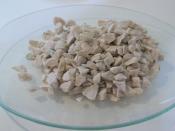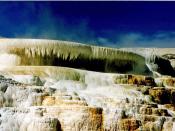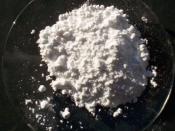Treatment of results:
The presence of calcium carbonate in egg shells makes them stronger and harder to break. Therefore, the more calcium carbonate present in the egg shell, the stronger it would be. In this experiment, the strength of brown egg shells and white egg shells respectively can be tested by measuring the amount of carbon dioxide present in each shell. Hydrochloric acid can be used to react with the calcium carbonate in the egg shells to produce carbon dioxide. Hence, this carbon dioxide evolved can be measured using a gas syringe, and the egg shell which produces more CO2 than the other is the stronger egg shell. An equation to show the reaction that will take place is:
HCl + calcium carbonate
When reacted with hydrochloric acid, the egg shells in the boiling tube will become soft and fragile as it no longer contains a great value of calcium carbonate within it.
Explain that the presence of caco3 determines the strength of the shells n the greater the amount the stronger the shell. Talk about the reaction occurring and write the equation State your expectations if the hyp is correct or if its wrong
Eggs contain something called "calcium carbonate". This is what makes them hard.
Vinegar is an acid known as acetic acid.
When calcium carbonate (the egg) and acetic acid (the vinegar) combine, a chemical reaction takes place and carbon dioxide (a gas) is released. This is what the bubbles are made of.
The chemical reaction keeps happening until all of the carbon in the egg is used up -- it takes about a day.
When you take the egg out of the vinegar it's soft because all of the carbon floated...


